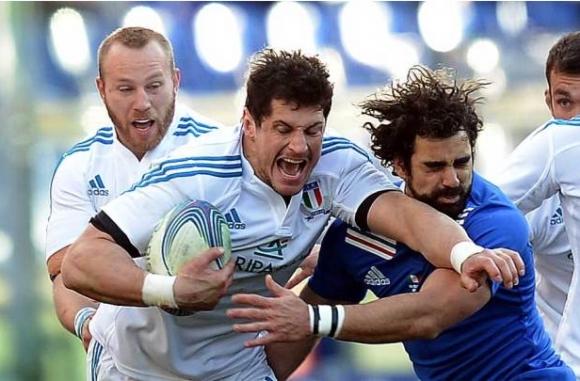Too Many Football Injuries; Too Much Protection?

Bone-crunching defense. That's what made the reputations of NFL players like Baltimore's Ed Reed and Bernard Pollard. These days, however, the 'bone-crunching' part has become a serious source of concern, not only to them, but to their NFL brethren.
Too many hard hits to the head are being linked to the cause of suicides by such legends of the game as Dave Duerson and Junior Seau. Former quarterback Bernie Kosar has turned to alternative medicine to combat the recurring aftereffects on his brain. And more stories like these are appearing with increasing frequency.
This issue has the likes of Pollard wondering if the NFL will even be around in 30 years.
The answer is yes. There's too much money involved. Still, something has to be done to stem the tide of traumatic injuries, and the guessing here is that the American football industry will rely on American researchers to find a solution the way they always do: technological advancement.
They will expect American ingenuity to create smarter armor to withstand the ever-bigger, ever-faster collisions.
Never doubt the march of progress. However, perhaps as well as looking into the future, maybe football should be looking into the past. A good place to start would be the game from whence it evolved: rugby.
Like their football-playing cousins, ruggers are also bigger, stronger, and faster. They wear some protective equipment, but not much. Significantly, this minimalism is most prominent on the head and shoulders. That's because ruggers tackle with their torsos and shoulders.
Compare the avergage hit impact. A football collision can generate 4600lbs of force; rugby tackles can generate 1600. Still, a football player is involved in an average of four tackles a game, whereas a rugger is involved in an average of 16. It can be argued that the physical absorption is similar in both sports. Yet, clinical studies cited by publications like the British Journal of Sports Medicine confirm that ruggers suffer far fewer injuries of all sorts.
Could it be that less equipment provides more safety?
The answer, of course, must be given within the context of the rules. Perhaps the NFL and NCAA are implementing the wrong ones. For example, perhaps they should allow more incidental contact from the start of a play to give pass defenders a fair chance at breaking up a completion. Currently, defenders must depend on the specter of a crushing blow to either intimidate a receiver or jar a ball loose from him. More contact involving less impact may be the way to go.
Rugby remains hugely popular worldwide, more so than American football (which has tried to expand its reach and, to date, has not succeeded.) Football has already begun to revert back to the lessons of rugby by limiting blows to the head. Perhaps it should go full circle and implement rugby's rules of contact, too.
If so, not only will the NFL still be here in 30 years, but chances will be much better that players like Reed and Pollard will still be around to see it.

